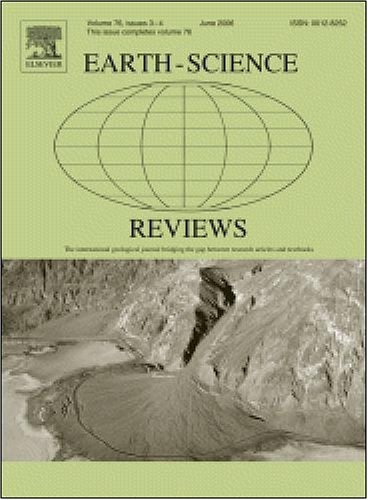Ostracoda (Crustacea) as indicators of anthropogenic impacts – A review
IF 10.8
1区 地球科学
Q1 GEOSCIENCES, MULTIDISCIPLINARY
引用次数: 0
Abstract
The impact of human activities on aquatic ecosystems has been a growing concern requiring reliable bioindicators for monitoring environmental changes. Ostracods, a group of small crustaceans, have shown great potential in this role due to their sensitivity to various pollutants and environmental conditions. We review all studied responses of Ostracoda to anthropogenic environmental stresses, covering different types of water bodies worldwide. The review is intended to summarize and highlight benefits of ostracods as indicators for potential implementation in water quality and other studies related to human impacts, including palaeo-research. We document the high value of ostracods for indicating anthropogenic pressures on aquatic ecosystems such as nutrients input, pollution by heavy metals, fertilizers, oil spills and even nuclear pollution with steadily increasing publication output since 1969. Most studies focus on eutrophication so far, but results on metalloids, pesticides, and hydrocarbons look very promising for further exploration. We expect future applications in the field of thermal and nuclear pollution as well as microplastic contamination, where almost no information concerning ostracods exists so far. Analytical methods in use involve indicator species approaches, including toxicity tests, association analysis, morphological variability, and shell chemistry with a recent trend of increasing numbers of papers on ecotoxicology.
介形类(甲壳类)作为人类活动影响指标的研究进展
人类活动对水生生态系统的影响日益受到关注,需要可靠的生物指标来监测环境变化。梭形纲动物是一类小型甲壳类动物,由于其对各种污染物和环境条件的敏感性,在这方面显示出巨大的潜力。我们回顾了所有关于梭形纲动物对人为环境压力的反应的研究,涵盖了全球不同类型的水体。该综述旨在总结和强调梭形纲动物作为指标在水质和其他与人类影响相关的研究(包括古生物研究)中的潜在应用优势。我们记录了自 1969 年以来不断增加的出版物产出,显示了桡足类在显示水生生态系统人为压力(如营养物质输入、重金属污染、化肥、石油泄漏甚至核污染)方面的高价值。迄今为止,大多数研究都集中在富营养化方面,但有关类金属、杀虫剂和碳氢化合物的研究结果也非常值得进一步探索。我们期待未来在热污染和核污染以及微塑料污染领域的应用,迄今为止,这些领域几乎没有关于梭形纲动物的信息。目前使用的分析方法涉及指示物种方法,包括毒性测试、关联分析、形态变异和外壳化学,最近有关生态毒理学的论文数量呈上升趋势。
本文章由计算机程序翻译,如有差异,请以英文原文为准。
求助全文
约1分钟内获得全文
求助全文
来源期刊

Earth-Science Reviews
地学-地球科学综合
CiteScore
21.70
自引率
5.80%
发文量
294
审稿时长
15.1 weeks
期刊介绍:
Covering a much wider field than the usual specialist journals, Earth Science Reviews publishes review articles dealing with all aspects of Earth Sciences, and is an important vehicle for allowing readers to see their particular interest related to the Earth Sciences as a whole.
 求助内容:
求助内容: 应助结果提醒方式:
应助结果提醒方式:


